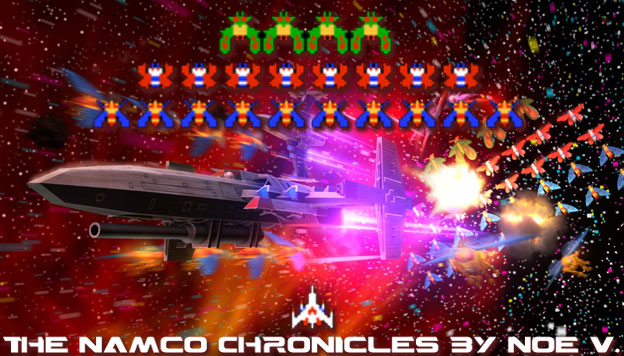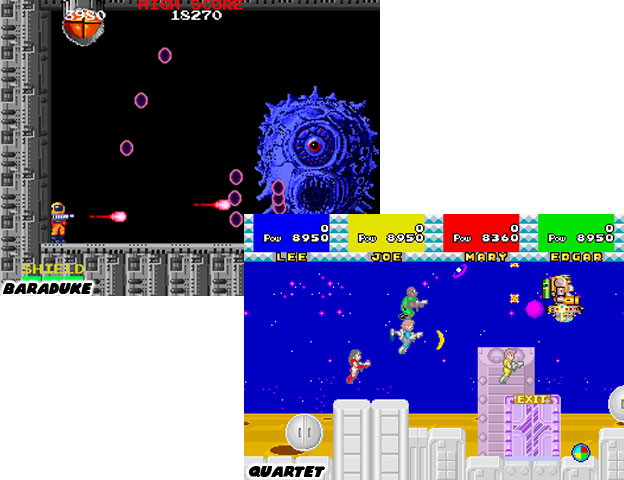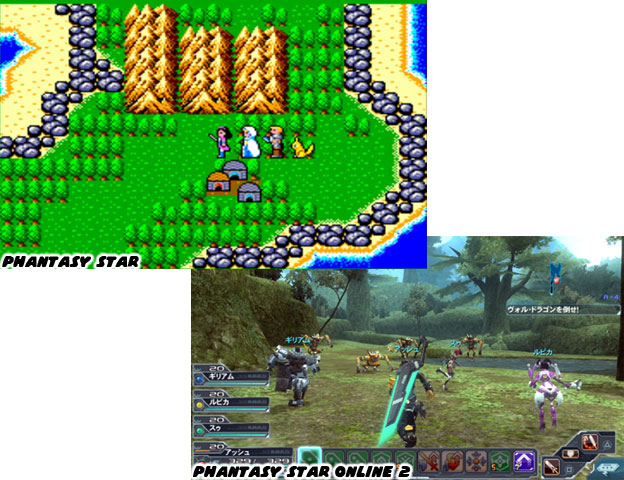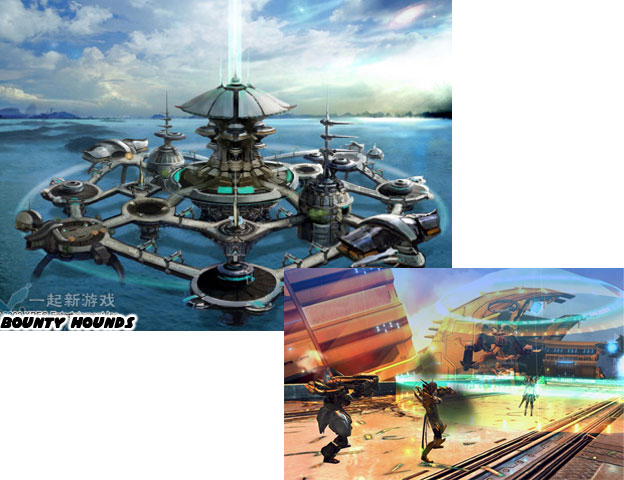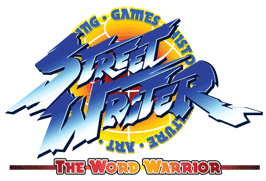Namco and Sega were locked in perpetual battle for the hearts of gamers. Every title that one company released often had an answer from the rival. Sometimes the answer was better and sometimes it wasn't. Sega never had Namco's Pac-Man level of success with any of their maze games but when it came to racing games they showed that they could catch up to and beat Pole Position. It was not the only genre where the studios would compete. For science fiction shooters Sega raised the bar in 1985 with Space Harrier. It introduced audiences to a world in which they could fly up, down and across the screen and shoot at alien lifeforms and giant robots over a quickly scrolling battlefield. The technology that Sega used was not really all that new, it simply built on sprite scaling engines that they had used in Turbo, Hang-On and OutRun. Those racing games taught developers great concepts and applications that would work in other genres.
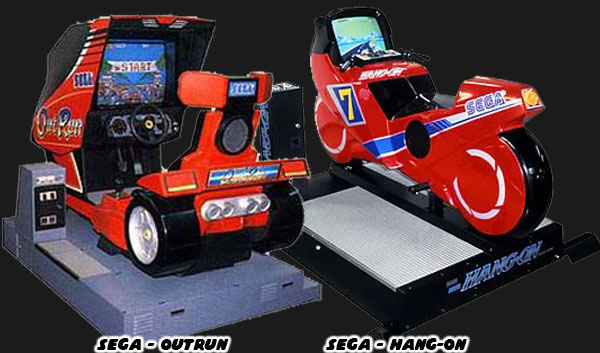
Prior to Space Harrier most space shooters were single screen affairs, often from an overhead perspective. The 1979 Atari game Asteroids was among the most influential and earliest examples of a space shooter. The vector based graphics rendered amazingly sharp details and the game engine added some realistic physics on top of that. Unfortunately all of the early vector-based games were in black and white with hollow shapes making up the characters or ships. Namco showed the West how they could improve upon the genre, they released the full color space shooter Galaxian the same year as Asteroids. Then they added a scrolling background in 1983 with the hit Xevious. Sega redefined the space shooter with Space Harrier but Namco was barely getting started, in 1988 they released Burning Force. The game featured similar mechanics and even the graphic techniques used in Space Harrier. Burning Force differed in that as the character progressed they went from flying atop a rocket bike to being encapsulated into a small space ship. The game also allowed players to earn weapon upgrades, which was something that they had been used to seeing in the earlier overhead scrolling shooters from the company and other Japanese studios.
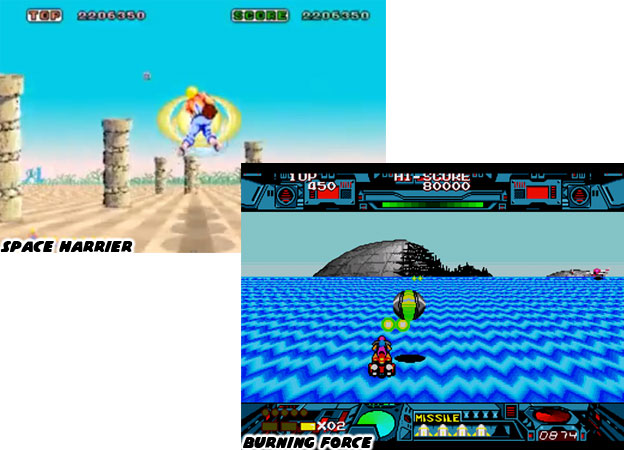
Namco had shown that they could probably top anything that Sega had came up with even as a smaller company. It did not matter how imaginative or outlandish an idea was, they were the ones that could improve upon it while adding a unique twist. Where the the two studios really began to eclipse the competitors was in 3D technology. Plenty of studios did amazing sprite based games but few were willing to put in the investment required to shift operations into 3D. The hardware was new and the software yet to be written. The gambles not only with a production budget but with an entire company were at stake. Both Sega and Namco began the '90s with a dramatic shift from the old ways of development. The gameplay elements that they pioneered would be copied by the industry over the next two decades.
Game fans had gotten a taste for computer generated graphics thanks to the film TRON. Released in 1982 the movie revolved around stolen code from the fictional game titled Space Paranoids. The graphics in Space Paranoids were way ahead of their time but audiences knew that someday the arcades would meet that level of technology. Growing up I had no idea that it would take over a decade to get there. The early polygonal games were not quite at the level that TRON promised, however they showed more than enough potential.
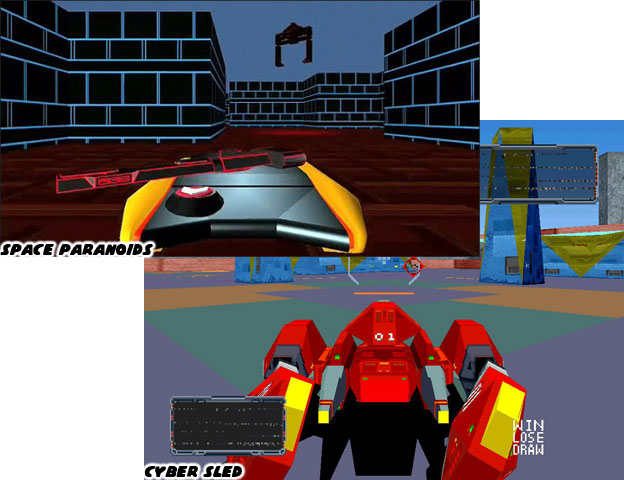
In 1993 Namco released Cyber Sled. The game revolved around futuristic tank combat. The tanks were set in arenas with free standing pylons and walls. They provided cover from the machine gun view and missiles that all of the tanks could fire. All of the stages were timed so the more aggressive and tactical player was usually the victor. It was essentially an updated version of the Atari 2600 classic Combat. Players piloted the tanks via a dial joystick yoke, like an actual tank driver. The polygons were bright and colorful and the animation and music very uptempo. The three-dimensional graphics were seamless. The tank and character designs simply oozed style. They were heavily influenced by science fiction animé and looked unlike anything seen in Western cartoons or films. In typical game fashion they each had their own strengths and weaknesses, from light and fast to heavy and powerful. The machines, like many early polygonal games, cost a bit more than the average arcade unit. Only the larger arcades could afford it and many of the early 3D titles.
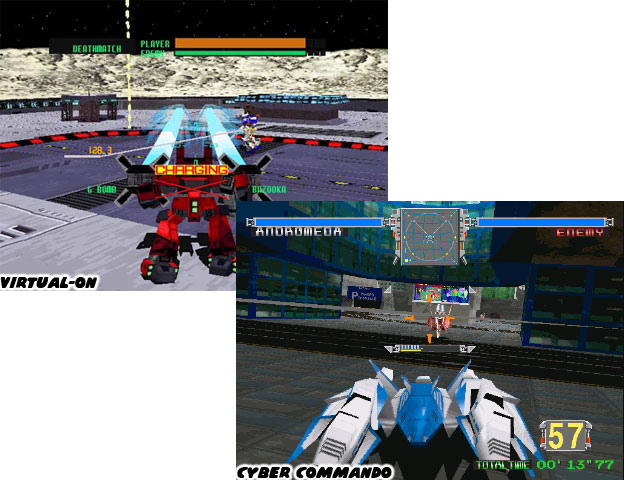
Science fiction design went over very well with the early polygon hits. Sega released a robotic combat game in 1995 titled Cyber Troopers Virtual-On. That same year Namco released Cyber Commando, a spiritual successor to Cyber Sled. In just a few short years of working with 3D technology the quality of their polygonal engines had grown exponentially. Everything moved faster and responded much more fluidly than the early polygon titles. Visually each generation of 3D game was more gorgeous than the prior. Virtual-On and Cyber Troopers featured new lighting techniques and particle effects that were impossible to reproduce in 2D games. The environments and machines of war that each game featured were very convincing. Gamers could get a greater sense of simulation from these sit down cabinets than ever before. The models in each game gave off a strong sense of weight and mass.
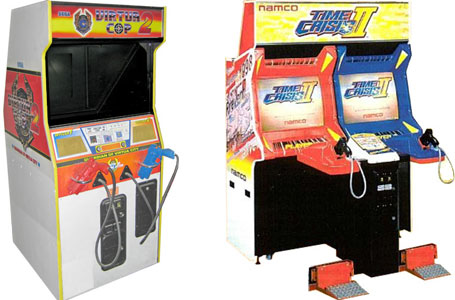
Once the various genres started moving into 3D it was tough to go back. There were no equivalents to Virtual-On or Cyber Sled in 2D. Granted, some genres seemed to have better gameplay in 2D but both Sega and Namco would begin luring players away from those games as well. Even classic light gun shooters were made amazing thanks to polygon technology. Sega released Virtua Cop in 1994, and Namco responded with Time Crisis in 1995. Audiences on both sides of the Pacific began to notice the quality of each game had was only getting better. They also began to notice that Namco seemed to revel in taking shots at their bigger rival. The next blog will look at the game that created one of the longest running rivalries in the arcade.
As always if you would like to sponsor me
please visit my Patreon page and consider donating each month, even as little as $1 would help make better blogs and even podcasts!
